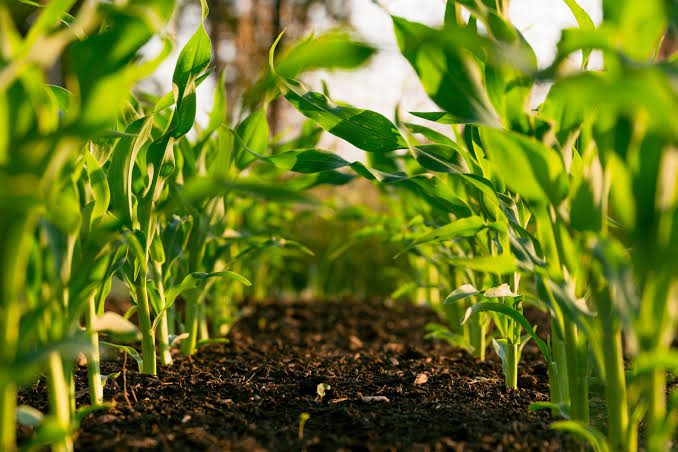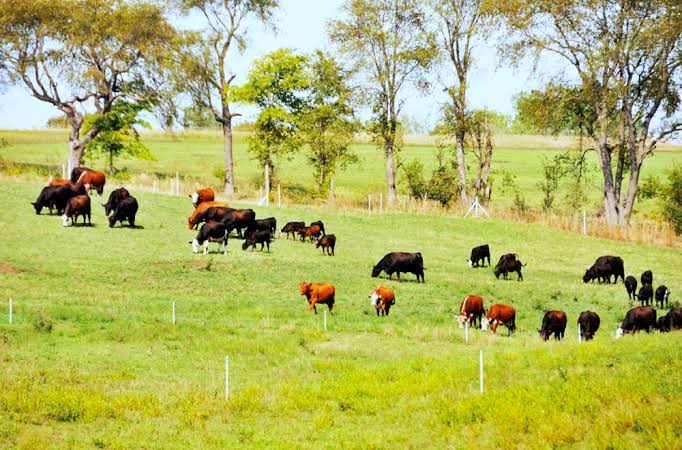Regenerative agriculture techniques are a way of farming that helps the Earth become healthier. Farmers who use these methods want to give back to the land and make it strong. They believe in making the soil, plants, and animals work together like a big family.
One important thing in regenerative agriculture is the soil. Good soil is like a happy home for plants. Farmers use techniques like cover crops and no-till farming to keep the soil happy. Cover crops are like a cozy blanket for the soil, and no-till farming is like not disturbing the soil too much. This makes the soil feel safe and helps it stay rich.
Another important part of regenerative agriculture is biodiversity. This big word means having lots of different plants and animals. It’s like inviting many friends to a party. When there are many kinds of plants and animals, they help each other. For example, some plants can help protect others from bad bugs, and some animals help plants by spreading their seeds.
Regenerative farmers also like to use less chemicals. They want to be gentle to the Earth and not use things that can hurt it. So, they use natural ways to fight off bad bugs and help plants grow strong. It’s like taking care of a garden without using any harsh sprays.
Water is another important part of regenerative farming. Farmers try to keep water clean and safe. They do things like planting trees by rivers to keep the water cool and clean. Clean water is important for everyone, including the fish that swim in it.
Regenerative agriculture is a way of farming that thinks about the future. It’s like planting seeds and watching them grow into strong, healthy plants. Farmers who use these techniques care about the Earth and want it to be a good place for their children and their children’s children.
Regenerative agriculture techniques are about being kind to the Earth. It’s like taking care of a friend. Farmers want to make the land happy and strong, so it can give us good food and a beautiful home for a long, long time.
Read Also: Cattle Salt Lick: Importance and How often it should be used
Benefits of Regenerative Agriculture Techniques

Regenerative Agriculture Techniques offer several important benefits:
1. Healthy Soil: These techniques help soil become healthier. Healthier soil means better plant growth, which leads to more food for everyone.
2. Biodiversity: Regenerative farming supports many different types of plants and animals. This is like having a big family of plants and animals that help each other grow.
3. Less Chemicals: Farmers use fewer chemicals, which can be good for the environment. It’s like not using too much medicine when you’re not very sick.
4. Clean Water: Water stays clean and safe for all living things. This is important for fish and other creatures that need clean water to survive.
5. Climate Help: Regenerative agriculture can help fight climate change. It’s like planting trees to make the Earth cooler.
6. Long-Term Thinking: Farmers using these techniques care about the future. They want the land to be good for their children and grandchildren.
7. Resilience: Regenerative farming makes farms more resilient. This means they can handle problems like bad weather or pests better.
8. Economic Benefits: It can be good for farmers’ wallets too. Healthy soil and strong plants can mean better harvests and more money for the farmer.
9. Beautiful Landscapes: Regenerative agriculture often leads to beautiful, diverse landscapes that people enjoy. It’s like creating a work of art with the land.
10. Sustainability: These techniques help farming be sustainable, which means it can go on for a long, long time without hurting the Earth.
In simple words, regenerative agriculture techniques make the land stronger, help it stay healthy, and provide good things for everyone.
Economic Impacts of Regenerative Agriculture Techniques
Regenerative agriculture techniques have significant economic impacts that can benefit farmers and communities. Here, we will look into the financial advantages of adopting these practices:
1. Increased Crop Yields: Regenerative farming methods often lead to higher crop yields. This means farmers can produce more food, which can be sold or used for their families. It’s like getting more from the same piece of land.
2. Reduced Input Costs: By using fewer chemicals and fertilizers, farmers can save money on costly inputs. This is similar to spending less on medicine when you’re not very sick.
3. Improved Soil Health: Healthy soil results in better plant growth and productivity. As a result, farmers may not need to spend as much on soil amendments or replacements.
4. Diversified Income: Some regenerative farmers diversify their income by selling not only crops but also products like honey, eggs, or meat. It’s like having multiple sources of money coming in.
5. Resilience to Climate Variability: Regenerative practices make farms more resilient to extreme weather events. This means even if there’s a bad year, the impact on the farmer’s income can be less severe.
6. Market Opportunities: Some consumers are willing to pay more for products from regenerative farms because they value sustainable and environmentally friendly practices. This can translate to higher prices for the farmer’s products.
7. Ecosystem Services: Regenerative farming can provide ecosystem services like pollination and water purification, which can have economic value.
8. Long-Term Viability: The sustainability of regenerative agriculture practices ensures that the land remains productive and profitable for future generations.
In simple terms, regenerative agriculture techniques can make farming more financially secure, provide opportunities for increased income, and support the long-term economic well-being of farmers and communities. It’s like a smart investment in the land’s future.
Read Also: Cow Milk Production Complete Guide
Holistic Grazing and Livestock Management

Holistic Grazing and Livestock Management” is a crucial aspect of regenerative agriculture. Here are some key points that can be covered under this subtopic:
1. Grazing Systems: Explain different grazing systems, including continuous, rotational, and adaptive multi-paddock grazing.
2. Animal Health and Welfare: Discuss the importance of providing a healthy and humane environment for livestock.
3. Forage Selection: Explain how selecting appropriate forage species and managing pasture composition can benefit both livestock and the land.
4. Grazing Planning: Describe the process of creating a grazing plan to optimize forage use and recovery periods.
5. Rest and Recovery: Discuss the significance of allowing pastures to rest and recover after grazing.
6. Grazing Animal Behavior: Explore the behavior of grazing animals and how it impacts pasture management.
7. Fencing and Infrastructure: Talk about the role of fencing, water systems, and other infrastructure in holistic grazing.
8. Grazing Monitoring: Explain how technology and data can be used to monitor and manage grazing patterns.
9. Soil Health: Discuss how well-managed grazing can improve soil health through nutrient cycling.
10. Biodiversity Benefits: Highlight how holistic grazing can promote biodiversity and habitat restoration.
11. Sustainable Stocking Rates: Explain how to determine the appropriate number of animals for a given area.
12. Herding Techniques: Explore the use of herding and livestock guardian animals in holistic grazing.
13. Case Studies: Provide examples of successful holistic grazing and livestock management practices on regenerative farms.
These points will help create a comprehensive understanding of the principles and techniques associated with holistic grazing and livestock management in the context of regenerative agriculture.
Read Also: Profitable Business Ideas in Wastewater Treatment

